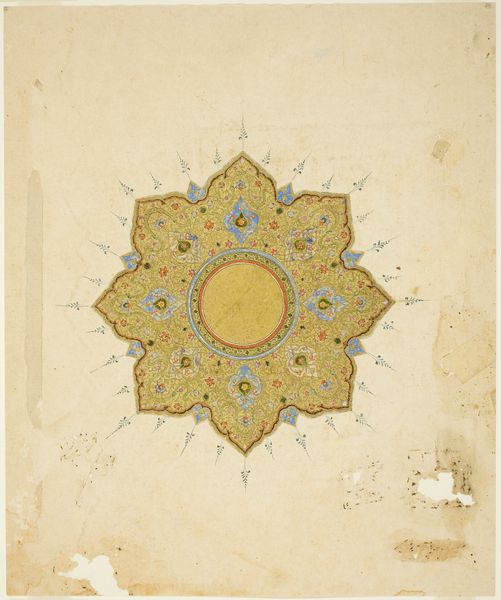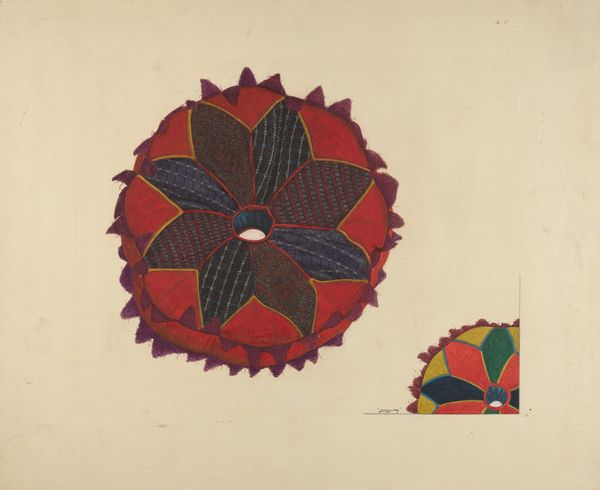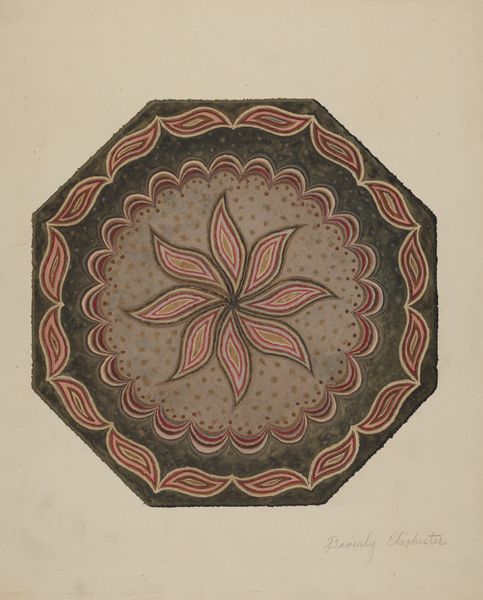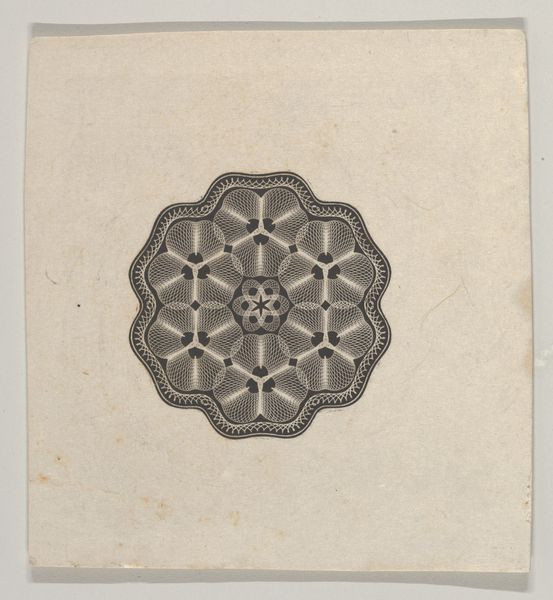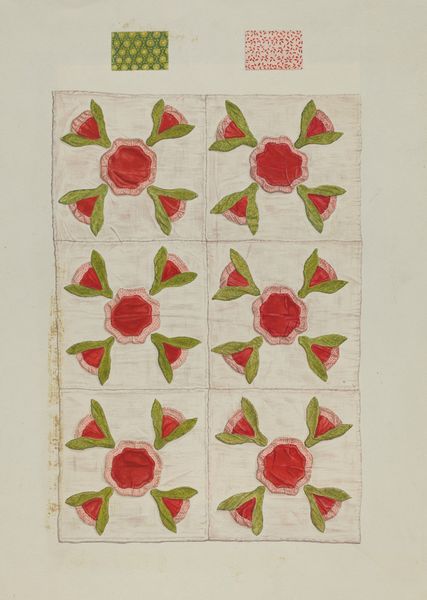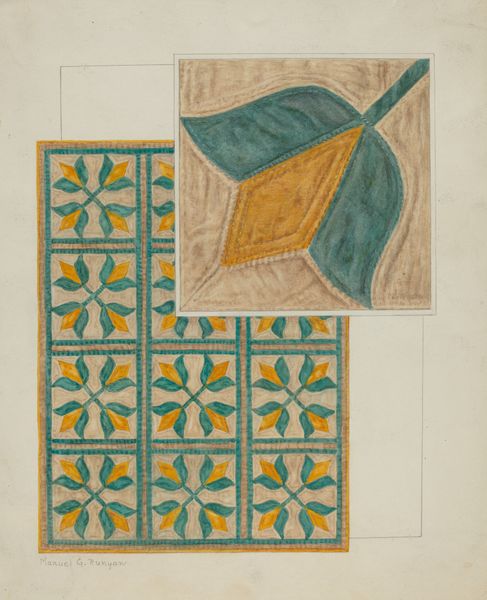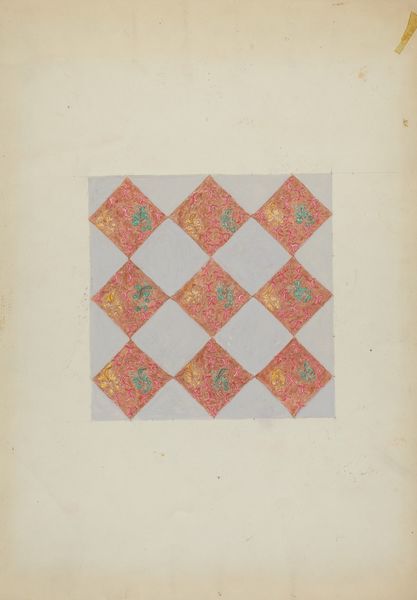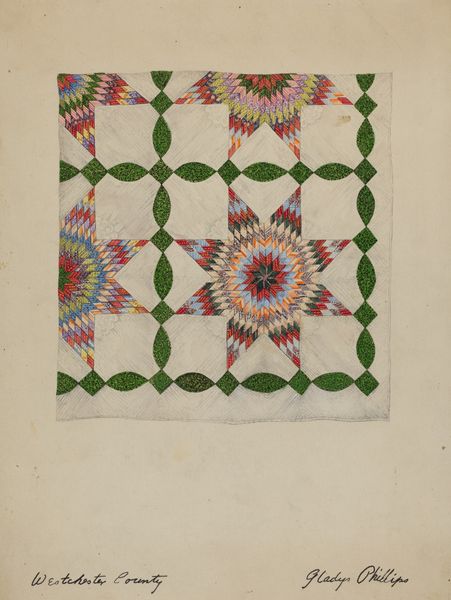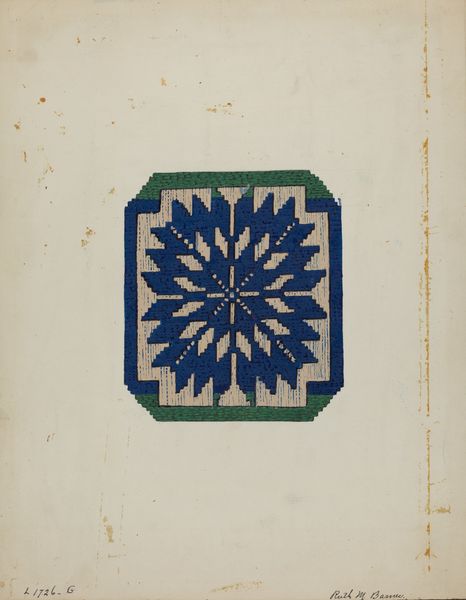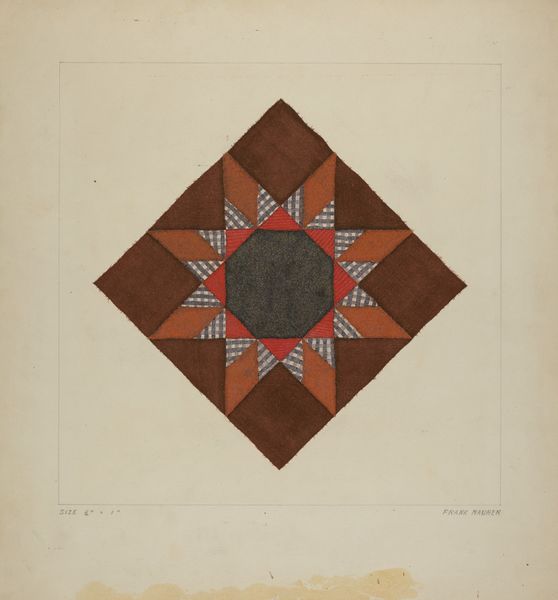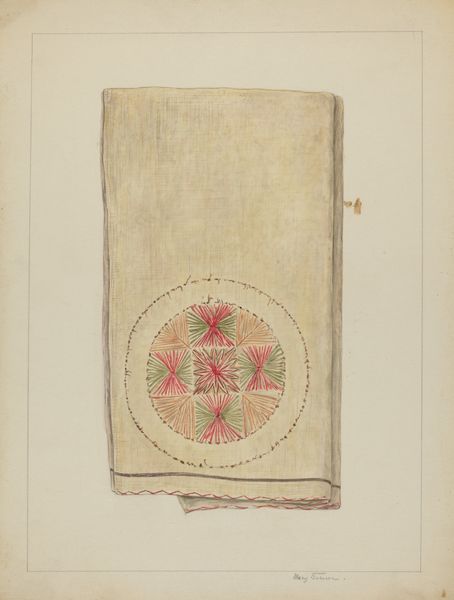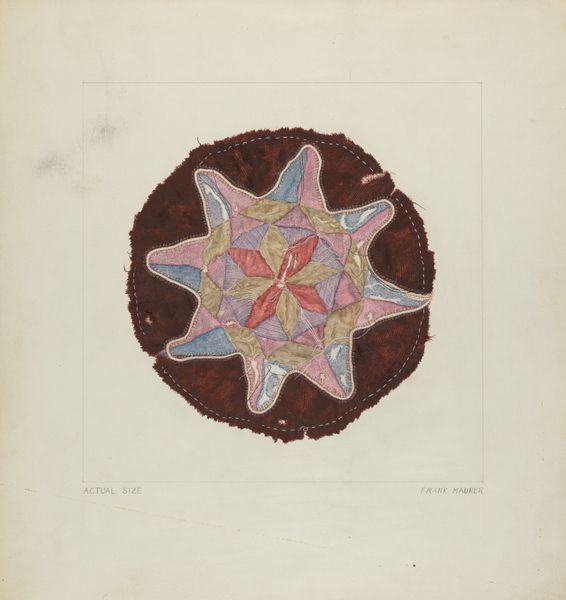
drawing, ornament, paper, watercolor, ink
#
drawing
#
ornament
#
art-nouveau
#
paper
#
watercolor
#
ink
#
geometric
#
watercolour illustration
#
watercolor
Dimensions: height 113 mm, width 85 mm
Copyright: Rijks Museum: Open Domain
Editor: Here we have Reinier Willem Petrus de Vries's "Rond ornament met bladmotief," created sometime between 1884 and 1952, using ink and watercolor on paper. It's a symmetrical, almost hypnotic design. What do you see in this piece, especially considering its time period? Curator: I see a fascinating negotiation between the burgeoning language of abstraction and the lingering influence of natural forms within the Art Nouveau movement. It makes me wonder about the role of ornament during a time of immense social and political change. Was it purely decorative, or could it also be a form of subtle resistance? A way of preserving beauty in a world becoming increasingly industrialized? Editor: Resistance? That’s not how I initially saw it. I was just admiring the balance of geometric shapes. Curator: Think about the context. The late 19th and early 20th centuries were periods of intense societal upheaval, with rising socialist movements and calls for social justice. Art Nouveau, while seemingly apolitical, can be interpreted as a rejection of industrial mass production and a longing for a return to craft and the natural world. Ornament, then, becomes a signifier of these values. Consider, also, how gendered notions of "decoration" relegated such designs to the domestic sphere, subtly subverting the dominant masculine culture. Editor: So you're saying this intricate design might be a quiet commentary on the politics of its time? Even if unintended by the artist? Curator: Precisely. Art often transcends the artist’s explicit intentions. By examining its form, materials, and historical context, we can uncover hidden layers of meaning and its implications in history. Do the individual leaf shapes evoke for you certain emotions or interpretations? Editor: That’s given me so much to think about – I hadn’t considered how "decorative" art could be so deeply connected to broader cultural shifts. Thank you for illuminating the potential power within something seemingly simple. Curator: And thank you for your fresh perspective! It reminds me that engaging with art is a dynamic process, shaped by our own experiences and interpretations.
Comments
No comments
Be the first to comment and join the conversation on the ultimate creative platform.

